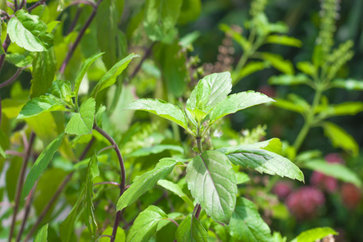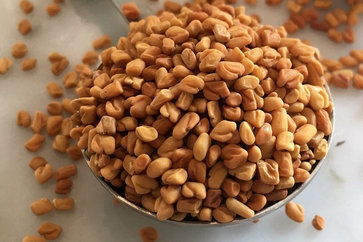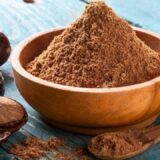What is Ayurveda? Is Ayurveda Alternative Medicine Safe?
Ayurvedic or Ayurvedic medicine is one of the oldest known medical systems and has been practiced in India for more than 3,000 years or probably up to 5,000 years.

The term Ayurveda is composed of the Sanskrit terms Ayus, meaning “duration of life,” and Veda, whose meaning is “knowledge.” It is a system of traditional medicine that has also been practiced historically in Sri Lanka, and that has taken relevance in the Western world during the last decades.
There are 2 basic types of Ayurveda, the traditional and the Maharishi; the latter is based on translations of a Hindu religious guru known as Maharishi Mahesh Yogi, but in essence, both types have the same holistic approach. In India, the majority of the population uses Ayurvedic medicine exclusively or in combination with conventional western medicine treatments.
Ayurvedic Medicine has been practiced in India for more than 3,000 years or probably 5,000 years.
What is Ayurvedic Medicine?
Ayurveda medicine has a concept that promotes the health and well-being of a person through a delicate balance between mind, body, and spirit, and this is achieved through proper diet and basically a healthy lifestyle. Anything that affects one of these three produces an imbalance.
Ayurveda treatments are varied, but yoga, acupuncture, massage, Panchakarma (purification of the body with baths, essential oils, and other methods) and medicinal herbs are of vital importance.
All this keeps the individual free of disease. It is estimated that this type of medicine uses around 500-600 herbs. According to Ayurveda, each person is born with a vital force composed of the five elements, namely, Water, Air, Earth, Fire, and Space, which form in a certain proportion a unique balance together with the individual energy.
This balance of elements and energy is known as dosha. Each person has one of the 3 existing doshas with particular characteristics and is dominated by one or two of the elements. The individual constitution of people is called Prakriti.
1. Vata
This dosha controls functions related to movements, such as blood circulation and breathing. When they are in balance, Vata people are usually always on the move, they are animated and have a lot of energy and creativity, but they must rest to avoid an imbalance.
When an imbalance happens, they experience dryness in parts such as the mouth and skin, and anxiety and fear may occur. Ways to restore balance include rest, hydration and warm massages.
Dominant: Space and air.
2. Pitta
Dosha that controls metabolic processes such as digestion and body temperature. The Pitta people in balance are cheerful, high intellect, leaders and in general, a strong personality.
When they become unbalanced, they tend to feel agitated and angry; It is said that the fire begins to dominate over the water and then the skin can break, causing diseases such as heartburn and stomach ulcers.
Generally, these people are recommended to meditate, avoid stress and spend time outside at night and not the day, when the environment is cooler.
Dominant: Water and fire.
3. Kapha
It controls the growth of the body. Kapha people in balance express love, tranquility, reflection, strength, perseverance, and compassion; otherwise, they are stubborn and experience the feeling of being trapped.
To restore balance, Ayurvedic medicine recommends practicing exercise, drinking plenty of fluids, avoiding cold environments and inhaling warm aromas such as eucalyptus and cinnamon.
Dominant: Water and earth.
Practitioners of Ayurvedic medicine promote the integral well-being and treatment of diseases or ailments based on a person’s dosha, so there is no equal Ayurvedic treatment for two people.
They appreciate the patient as a small universe or a microcosm with forces that fill it: Agni, (spirit, fire), soma (love or harmony) and prana (breath, life). These interact with the four elements and flow through the chakras or energy centers.
However, even if a person is dominated by two elements, really they are all interconnected, so it is important to look for the total balance. Unlike conventional medicine, Ayurvedic medicine seeks to restore the balance of the doshas of the individual in the long term, and not find an instant cure for a bad body.
Many of the herbs used in Ayurvedic remedies are common trees in forests, such as cinchona ( Pterocarpus marsupium ) and myrobalan.
The plant is the wealth of the Indian subcontinent that has made it a highly exploited region, with species of great medical importance. For example, Indian snakeroot (Rauwolfia serpentina) is a shrub from which reserpine, a potent tranquilizer, is extracted, but overcollection has made it rare in the wild.
Ayurveda Medicine promotes the health and well-being of a person through a delicate balance between mind, body and spirit.
Important herbs in Ayurvedic Medicine
- Gotu Kola (Centella asiatica)
- Black pepper (Piper nigrum)
- Sandalwood (Santalum album)
- Cinnamon (Cinnamomum zeilanicum)
- Shingli Mingli (Dioscorea deltoidea)
- Cardamom (Elettaria cardamomum)
- Lotus of India (Nelumbo nucifera)
- Amalaki (Phyllanthus emblica)
Is Ayurveda Medicine safe?
There are lots of questions about whether ayurvedic medicine is safe? Ayurveda is practiced successfully in India for more than 3,000 years as traditional medicine and not much research has been made in the past. But these days many research is going on and found to be amazing.
1. Type 2 diabetes
According to the research published Gujarat Ayurved University, Jamnagar on 4-Aug-2015, in Efficacy of Ayurvedic remedies in type 2 diabetes it has been found that Ayurvedic therapies were found to be significantly effective and clinically safe as no adverse events of adverse drug reactions was reported during the treatment period.
2. Sodhana therapy
Another research published in Anc Sci Life. 2015 Apr-Jun on Śodhana therapy, an Ayurvedic process for detoxification and therapeutic activities in which poisonous medicinal plants are used. It has been found that as per the concept of Ayurveda, “even a strong poison can be converted to an excellent medicine if processed and administrated properly.
3. Dementia
A research published in Evid Based Complement Alternat Med. 2018, on the treatment of Dementia with ayurvedic medicine. It have been found that popular Ayurvedic medicinal plants such as Ashwagandha, Turmeric, Brahmi, Shankhpushpi, Guggulu and Gotu Kola, not only induce antistress and reduce brain aging but also boost memory enhancing effects. It help in regeneration of neural tissues, but also induce antioxidant, anti-inflammatory, antiamyloidogenic, nutritional, and immune-supportive effects in the human body.
Be careful with some remedies that use toxic metals or minerals, since they become harmful if they are used incorrectly or are applied by people who are not properly trained. In some countries, such as the United States, Ayurvedic products are legally regulated as dietary supplements.
If you are interested in Ayurvedic Medicine, take into account these considerations and look for more information, preferably from a doctor, before taking remedies.
Sources:
https://nccih.nih.gov/health/ayurveda/introduction.htm
http://umm.edu/health/medical/altmed/treatment/ayurveda
https://www.betterhealth.vic.gov.au/health/conditionsandtreatments/ayurveda
https://en.wikipedia.org/wiki/Ayurveda

























